
 SmokinTex 1430 Smoker PID Temperature Controller Modification
SmokinTex 1430 Smoker PID Temperature Controller Modification



 SmokinTex 1430 Smoker PID Temperature Controller Modification
SmokinTex 1430 Smoker PID Temperature Controller Modification


Disclaimer...
I am not a licensed electrician nor a certified appliance repairman.
If you decide to do this or something similar you will be working with 120VAC
which needs proper respect.
I follow 1 rule: Don't tell your wife.
Proceed at your own risk.
Purpose:
I started using a Stoker to monitor my SmokinTex 1430 electric smoker.
This is a very good smoker, just set it and forget it (well almost).
As with most heating devices there is a temperature swing between on/off
cycles as the device attempts to maintain a reasonable average temperature
as close to the desired setting as possible.
My smoker's temperature range was 30+ degrees(F) with as setting of 200 degrees.
The geek in me said this could be improved.
With a little research, I decided a PID temperature controller was the way to
maintain a more stable oven temperature.
Justification:
Smoking with a more stable temperature should make for a more consistent smoke.
This may cause less wear and tear on the heating element
- you wouldn't alternate between full throttle and coasting to average
the desired driving speed in your car.
It's fun and interesting (you're reading this).
Original Smoker Set Up
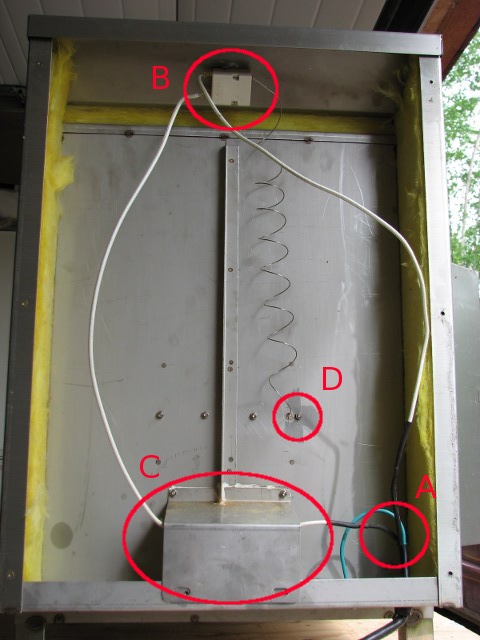
|
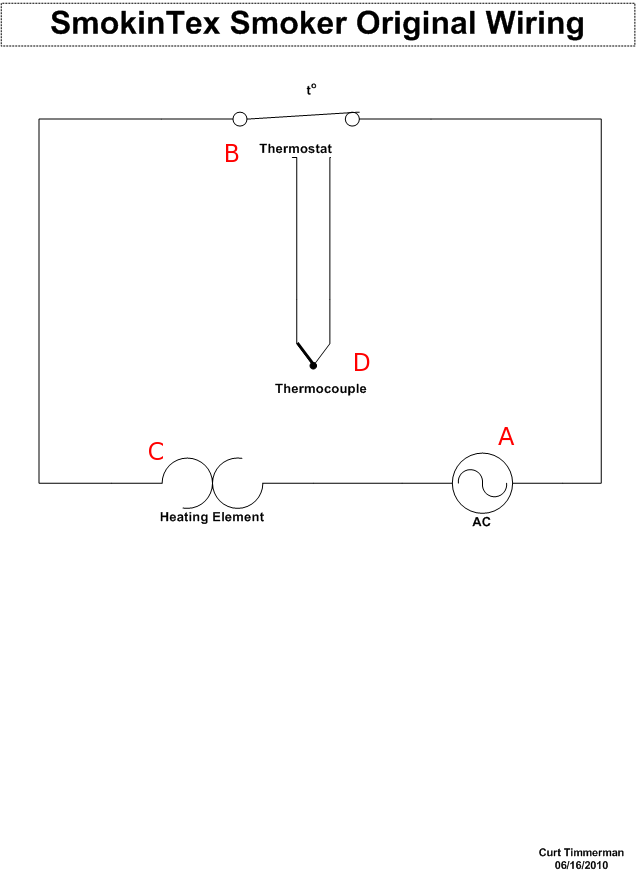
|
|
A closer view of the heating element connection
(C).
I didn't have to make any connection changes here. |
The basic design is simple making it easy to modify. |
Modified Smoker Set Up / Part 1 / Initial Modifications
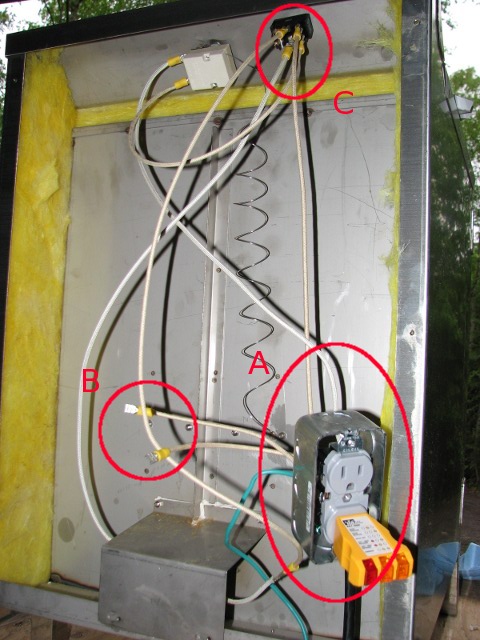
|
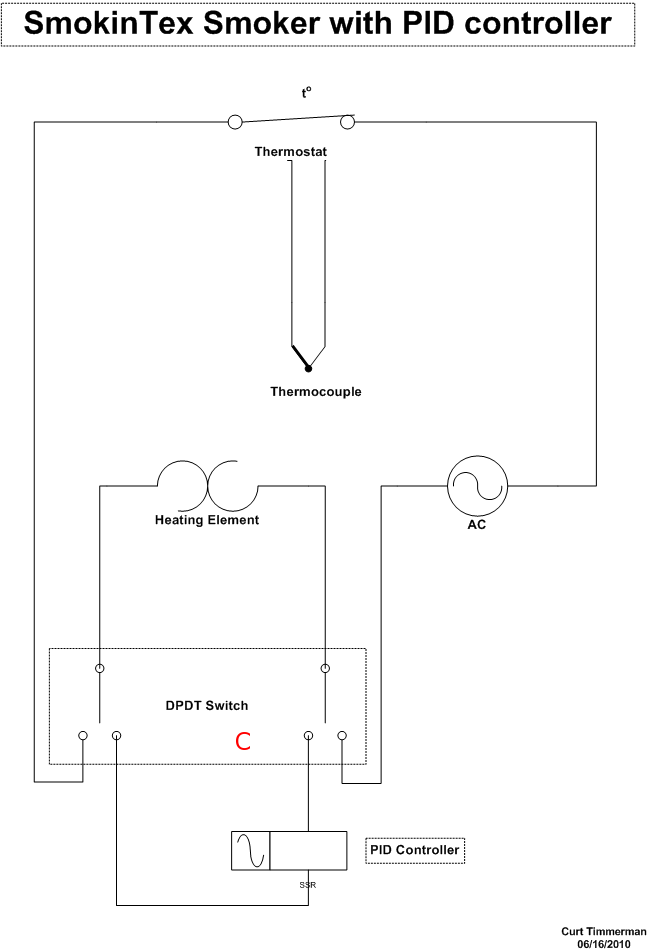
|
Toggle (C)
for switching between the SmokinTex thermostat
and the PID controller. |
The first modification placed a DPDT switch between the heating element and the rest of the SmokinTex circuit. |
Modified Smoker Set Up / Part 2 / Ready to Assemble (Almost)
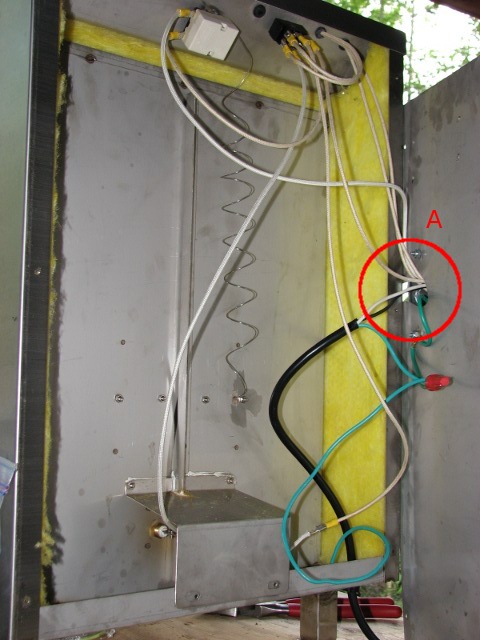
|
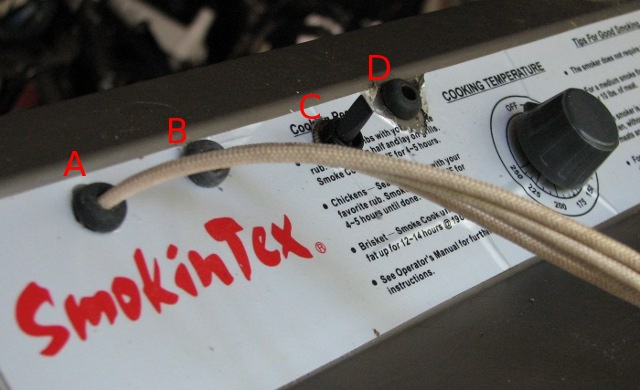
|
|
|
Modified Smoker Set Up / Part 3 / PID Assembly
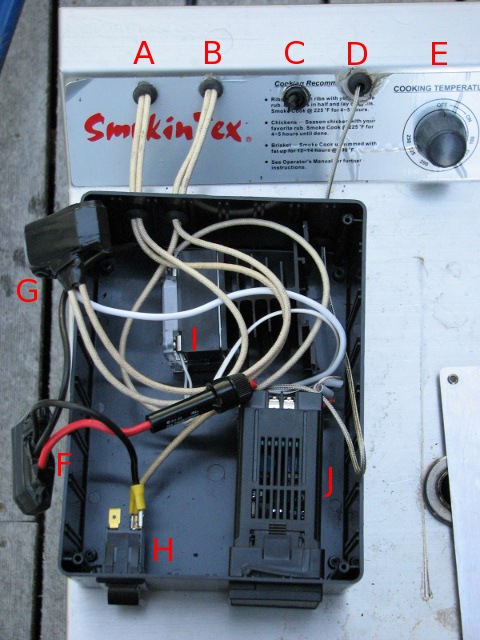
|
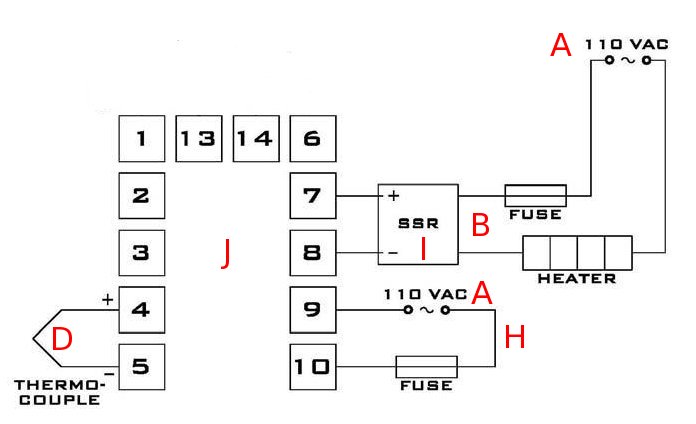
|
|
|
Modified Smoker Set Up / Final Assembly
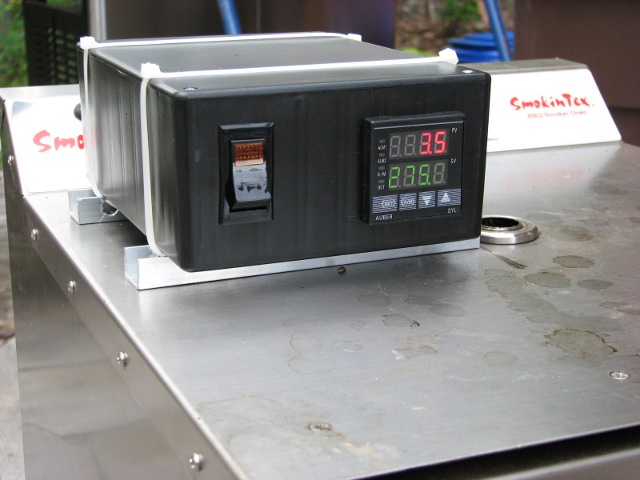
Mounted PID temperature controller. |
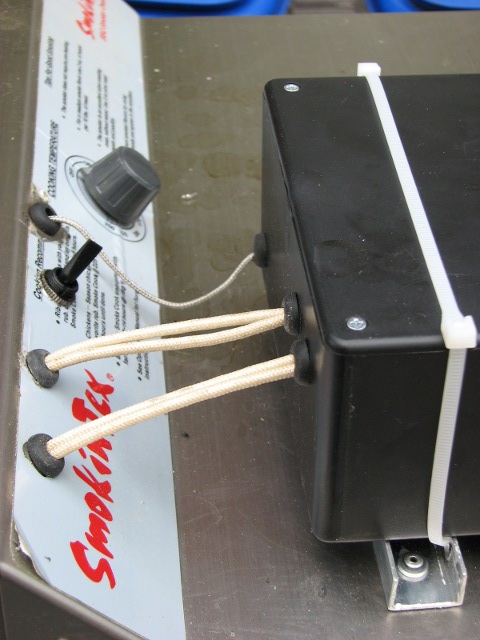
Connections between smoker and the PID controller. |
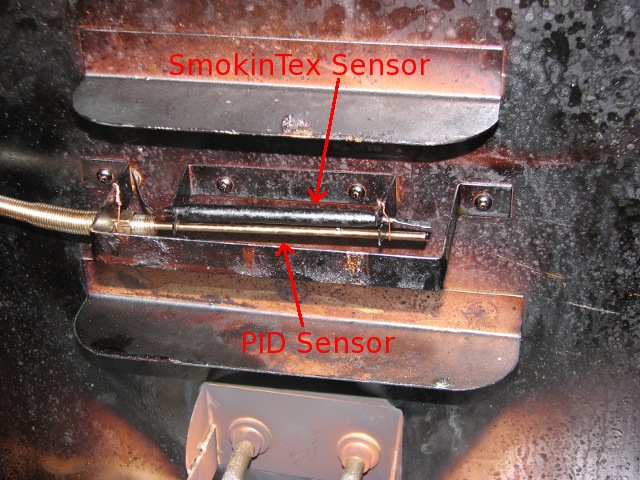
The PID controller thermocouple was wired directly beneath the SomkinTex sensor
so both readings will be close to the same.
I originally had it above the SmokinTex sensor but the smoker shelf bumped it when in position. |
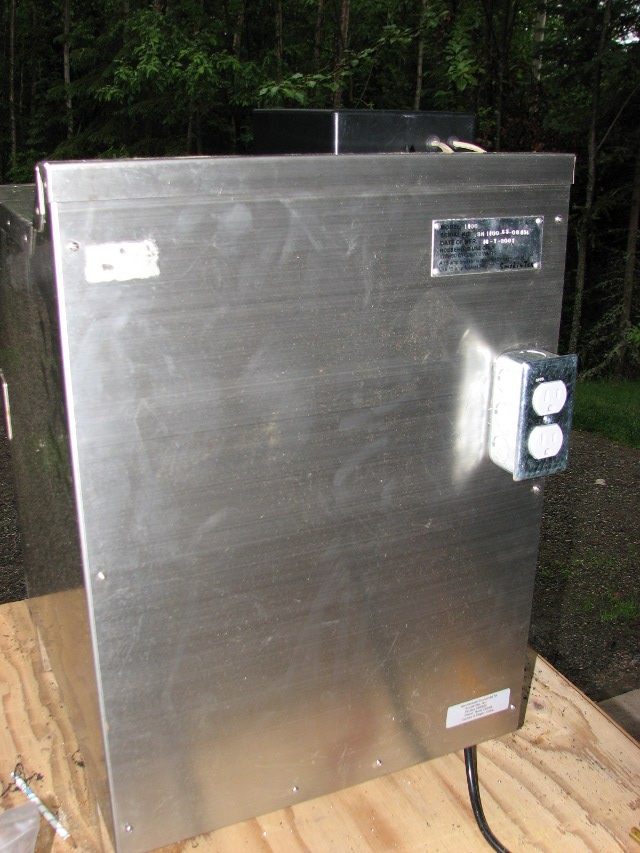
Electrical socket that doubled as a terminal connector. |
Test Results
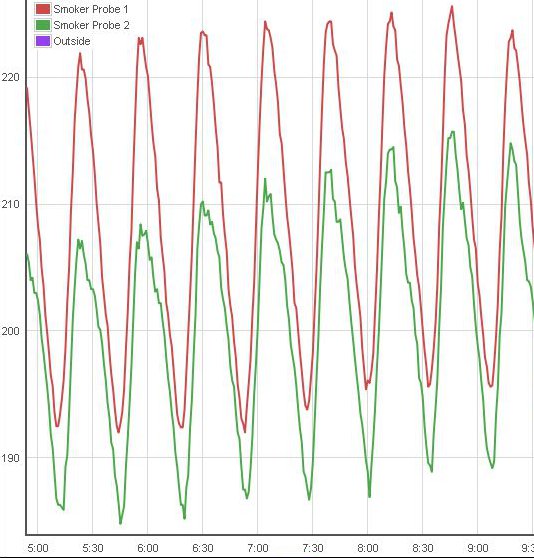
|
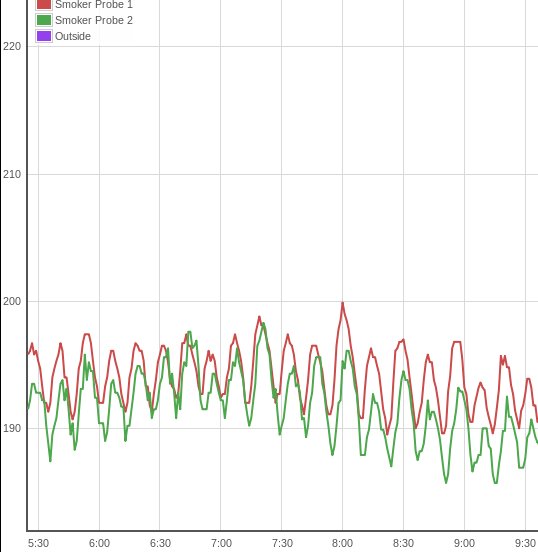
|
|
Stock Smoker Temperature Profile
|
Modified PID Smoker Temperature Profile
|
Construction Notes
|
Using an AC Outlet as a Terminal Strip The outlet below has 4 neutral (white) and 4 hot (black) connections. One (and only one) connection on each side is the AC input. The other 3 connections feed the other AC devices. Observe the wattage limitations of the AC source. 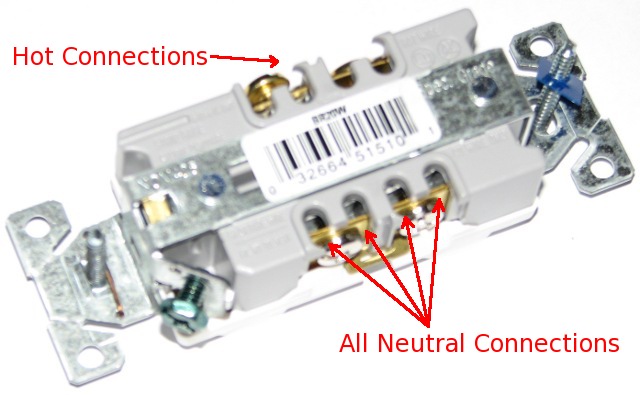
|
|